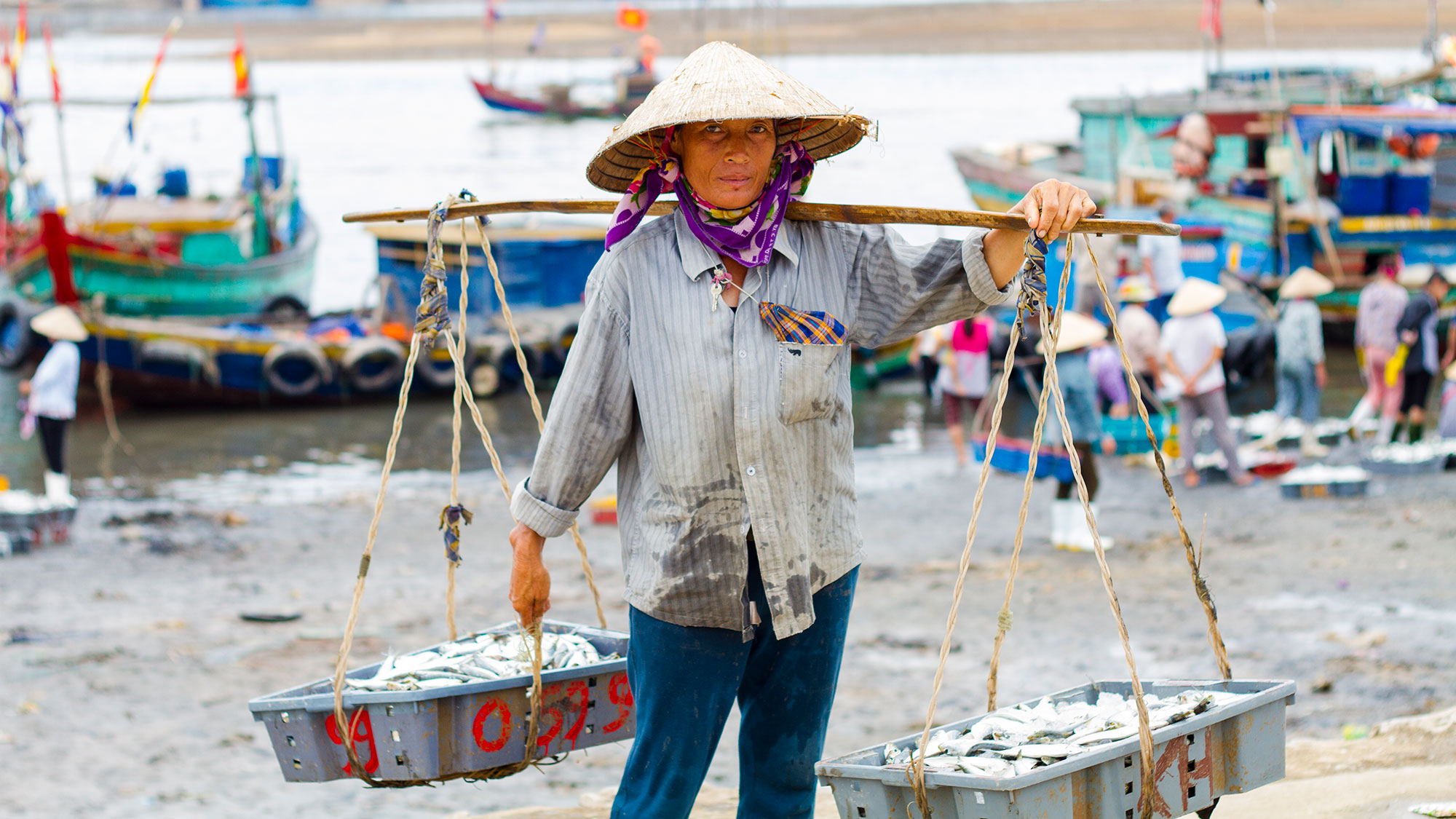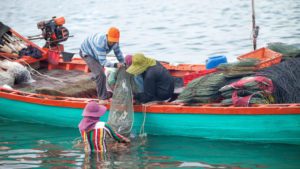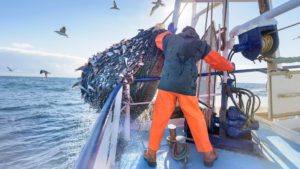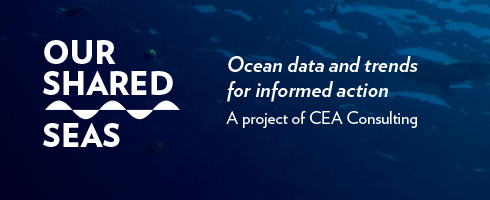Last month, Our Shared Seas highlighted findings from the Global Biodiversity Outlook Five, the UN’s latest report, which shows that countries have failed to achieve the biodiversity targets set a decade ago as part of the UN Convention on Biological Diversity. The new report paints a somber picture of the future, but does point to an immediate opportunity to address one of these targets: eliminating harmful fishing subsidies that are actually causing overfishing and impacting the livelihoods of tens of millions of people throughout the world.
Governments committed to addressing these harmful fishing subsidies when they approved United Nation’s Sustainable Development Goal 14. In September, the World Trade Organization resumed negotiations aimed at eliminating them by the end of this year. Discussions will continue throughout the year – or until an agreement is met.
To understand what is at stake – and what the chances are that the WTO will take action before the end of the year – Our Shared Seas checked in with Isabel Jarrett, Manager of the Pew Charitable Trusts’ program to end harmful fisheries subsidies.

Small scale fisher, Vietnam. According to recent analysis, 19 percent of global fisheries subsidies in 2018 went to the small-scale fishing sector. The industrial fishing sector received more than 80 percent of fisheries subsidies. Photo: iStock
The WTO has been negotiating around fishing subsidies for nearly two decades. What has changed, and why is this year significant?
Negotiations were reinvigorated in 2015, when world leaders adopted the UN Sustainable Development Goals. Goal No. 14, which focuses on conserving life in the ocean, has a dedicated target for ending harmful fisheries subsidies through an agreement at the WTO with a 2020 deadline. That’s just a few weeks away. We have more science than ever before that tells us that not only is overfishing one of the main threats to marine biodiversity, but also that solutions exist. According to a recent peer-reviewed journal article, if the WTO can reach an ambitious agreement by keeping the long-term sustainability of global fisheries at the forefront of its decision-making, subsidy reform could bring large, geographically extensive benefits to fish populations, fishers, consumers, and taxpayers across the globe. And it’s a momentous year for the WTO: 2020 is the organization’s 25th anniversary. WTO member governments should mark the occasion by demonstrating that multilateral cooperation can still deliver outcomes of global importance.
…if the WTO can reach an ambitious agreement by keeping the long-term sustainability of global fisheries at the forefront of its decision-making, subsidy reform could bring large, geographically extensive benefits to fish populations, fishers, consumers, and taxpayers across the globe.
What is the current state of play? What is needed to reach a successful conclusion to the negotiations process – and what is the likelihood of success?
Negotiators are now all working from the same, single text after the chair of the negotiations, Ambassador Santiago Wills of Colombia, circulated a draft text in June. This is remarkable because it’s been more than a decade since this last happened. This huge step forward should not be underestimated.
What’s needed now is political will from the highest levels of governments around the world. Much of the detailed, technical work, such as presenting and refining proposals, has already happened. Now is the time for decision-making and building bridges between positions to reach consensus.
We remain hopeful that with mounting research that demonstrates that harmful subsidies don’t support ocean health or coastal communities, and the increasingly urgent need to protect our environment for human health, livelihoods, and economies, governments will seize this opportunity that is right in front of them.
Which countries need to show strong support to advance this process? Are they on board?
Consensus from all 164 member countries is needed to reach an agreement at the WTO. That means that every member’s leader must be prepared to come to the table, negotiate, and compromise.
While we expect all members to take on responsibilities under an agreement, we hope to see the five biggest subsidizers—China, the European Union, South Korea, Japan, and the United States, who, combined, provide more than half of all harmful subsidies globally—take on the biggest responsibilities. For negotiations to conclude successfully, the rest of the world needs to know that these five political entities are willing to take on the biggest commitments. China and the European Union, for example, have both recently made public pledges about their commitment to biodiversity protections. At the UN Summit on Biodiversity a few weeks ago, European Union President Ursula von der Leyen signed the Leaders’ Pledge for Nature, which includes eliminating subsidies harmful to nature. President Xi Jinping also underlined China’s role in fulfilling targets to effectively reverse biodiversity loss. The negotiations at the WTO are an opportunity for the biggest players to lead by example and put their words into action.
For negotiations to conclude successfully, the rest of the world needs to know that the five biggest subsidizers—China, the European Union, South Korea, Japan, and the United States—are willing to lead by example and put their words into action.
Are there potential loopholes that the conservation community should pay extra attention to in order to ensure a robust outcome?
One threat to an ambitious agreement is the creation of loopholes that could undermine its effectiveness. For example, negotiators are discussing the possibility of including a “green box” of allowable subsidies. A list should be short and carefully drafted and avoid vague terms such as “safety on board” or “research, development, and innovation subsidies that aim at ensuring sustainable fishing” because they may inadvertently lead to increases in capacity. Another threat to a robust outcome is weak prohibitions that could be easily circumvented by bad actors.
Finally, while it’s important to ensure that special and differential treatment—or S&DT—is available to developing countries that need it to help them implement an agreement, any special rights should not undermine sustainability objectives. If S&DT is needed, it must be targeted and limited, addressing the specific concerns that some developing countries have, such as needs for subsistence and artisanal fishing or needs to address capacity constraints. Instead of permanent exceptions, developing countries should receive necessary technical assistance and capacity-building flexibilities over finite transition periods.
No matter the context, capacity-enhancing subsidies drive overfishing and deplete fish populations. It is in everyone’s interests—developed or developing country—to implement subsidy reform to help restore fish populations and protect the livelihoods of coastal communities that depend on a healthy ocean.
What are the equity and economic impacts of capacity-enhancing subsidies on small-scale fisheries globally?
Though small-scale fisheries employ about 90 percent of the world’s fishers, it’s estimated that each year, four-fifths—more than USD 18 billion—of harmful fisheries subsidies go to large-scale, industrial fishing fleets. Testimony from small-scale fishers, processers, and sellers in Ghana and Senegal speaks to the damage that large-scale, foreign fleets—which are subsidized more often than not—cause harm to the marine ecosystems they depend on. A multilateral agreement to end harmful fisheries subsidies would help level the playing field by helping countries fight illegal fishing and rebuild fish stocks. Governments could go one step further and redirect these funds to support fishers, instead of fishing itself. This is likely a much more effective means of safeguarding livelihoods.
How can marine conservation organizations and the funding community best support this process?
When they agreed to SDG14, world leaders made a commitment to address harmful subsidies by the end of this year. Now advocacy organizations need to hold governments accountable to their promises. These leaders need to hear from civil society that reaching an agreement should be a top priority—and a high-ambition one at that!
More than 160 organizations have signed a statement calling upon leaders to deliver on the subsidies mandate of Sustainable Development Goal 14 by the end of the year. Just two official clusters of negotiation meetings remain in 2020. The 25 days between Monday, November 2, the start of the next cluster, and Friday, December 4, the end of the last cluster, make up a critical period during which key decisions need to be made. The more governments hear from civil society between now and December 4, the better.
Organizations can raise their voices and get involved by following the hashtag #StopFundingOverfishing, amplifying social media posts on this issue, and publishing their own content with that hashtag. Tagging @WTO and the subsidies chair, @WillsSantiago will ensure the audience target sees the posts. Groups can also write to their ministers for trade, fisheries, environment, or foreign affairs and tell them to make ending harmful fisheries subsidies a top priority. An agreement could have a game-changing impact on the future health of the world’s ocean and the communities who depend on it, and governments need to hear that from as many channels and voices as possible.
An agreement could have a game-changing impact on the future health of the world’s ocean and the communities who depend on it, and governments need to hear that from as many channels and voices as possible.
For more information about how you can support these efforts or participate, reach out to Isabel Jarrett at ijarrett@pewtrusts.org.
Explore Interactive Fisheries Subsidy Reform Scenarios
For a deeper dive into what’s at stake when the WTO resumes negotiations in November, this SubsidyExplorer tool from University of California Santa Barbara’s emLab allows users to explore potential biological and economic impacts of fisheries subsidy reform scenarios. The resource was developed in partnership with The Pew Charitable Trusts and researchers from the Institute for the Oceans and Fisheries (IOF) at the University of British Columbia. Data was provided by Rashid Sumaila at IOF, Global Fishing Watch (GFW), and by many other individual collaborators.



